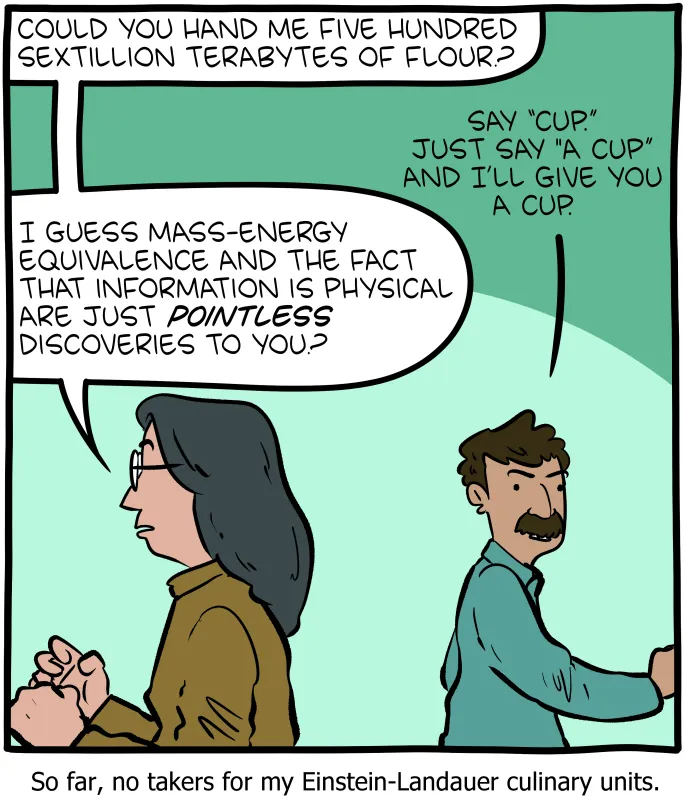this post was submitted on 13 May 2025
940 points (99.1% liked)
Science Memes
15060 readers
1764 users here now
Welcome to c/science_memes @ Mander.xyz!
A place for majestic STEMLORD peacocking, as well as memes about the realities of working in a lab.

Rules
- Don't throw mud. Behave like an intellectual and remember the human.
- Keep it rooted (on topic).
- No spam.
- Infographics welcome, get schooled.
This is a science community. We use the Dawkins definition of meme.
Research Committee
Other Mander Communities
Science and Research
Biology and Life Sciences
- !abiogenesis@mander.xyz
- !animal-behavior@mander.xyz
- !anthropology@mander.xyz
- !arachnology@mander.xyz
- !balconygardening@slrpnk.net
- !biodiversity@mander.xyz
- !biology@mander.xyz
- !biophysics@mander.xyz
- !botany@mander.xyz
- !ecology@mander.xyz
- !entomology@mander.xyz
- !fermentation@mander.xyz
- !herpetology@mander.xyz
- !houseplants@mander.xyz
- !medicine@mander.xyz
- !microscopy@mander.xyz
- !mycology@mander.xyz
- !nudibranchs@mander.xyz
- !nutrition@mander.xyz
- !palaeoecology@mander.xyz
- !palaeontology@mander.xyz
- !photosynthesis@mander.xyz
- !plantid@mander.xyz
- !plants@mander.xyz
- !reptiles and amphibians@mander.xyz
Physical Sciences
- !astronomy@mander.xyz
- !chemistry@mander.xyz
- !earthscience@mander.xyz
- !geography@mander.xyz
- !geospatial@mander.xyz
- !nuclear@mander.xyz
- !physics@mander.xyz
- !quantum-computing@mander.xyz
- !spectroscopy@mander.xyz
Humanities and Social Sciences
Practical and Applied Sciences
- !exercise-and sports-science@mander.xyz
- !gardening@mander.xyz
- !self sufficiency@mander.xyz
- !soilscience@slrpnk.net
- !terrariums@mander.xyz
- !timelapse@mander.xyz
Memes
Miscellaneous
founded 2 years ago
MODERATORS
you are viewing a single comment's thread
view the rest of the comments
view the rest of the comments

Except that moles would only work for counting granules of ground flour, as there is no "flour" molecule. Also, you'd need to have a very accurate measurement of the average mass of a single granule (or you'd need a packing efficiency coefficient and an average granule radius, otherwise you'd have to literally count them. Also, a mole of flour granules would be INSANELY large. 6.02*10^23 of anything larger than a macromolecule is no joke. At this point, since you'd have to weigh it or measure its volume anyway (unless you feel like counting microscopic flour particles for the next few trillion years), you might as well just use grams.
There's a better way: German flour types. They're specifying mineral content, e.g. standard "white flour" is Type 405, meaning that when you pyrolyse 100g of flour, 405mg of ashes will be left. As the minerals were all in carbon solution before, and temperatures are low enough to not melt them into slag, you're essentially left with single atoms. Close enough at least for an assumption. If you disagree I shall hand you a mortar.
Of course, that doesn't specify everything. I suggest also measuring the released energy, then jot both numbers down on the complex plane. So you have joule-moles of flour.
We have now reached the peak: figure out how much flour you have by burning it to ash, then carefully measure the mass of that to figure out the amount of flour you need.
A mole is just a unit of measure. We typically use it to measure the number of atoms or molecules present. But you can also have a mole of other things.
As a chemistry teacher, I am acutely aware. This is why I suggested that the only "thing" you could measure for flour would be "granules", the leftover ground bits which make up the substance of the flour. However, a mole of granules would still be insanely large (because you'd have to have 600 sextillion particles of flour, which would take up an insane amount of space) and a mole of any chemical constituent like amylose would be impure, and thus the measure meaningless. The greatest problem still lies in the counting, which would require either nigh-infinite time, or would require a conversion from either mass or volume into moles, so the whole point of using moles becomes moot.
I mean, of course no one would physically count out a mole of something. You don't physically count out each individual ion in a preparation of acid for your class, you just weigh the constituents and estimate. The joke I made was absurd, in the same vein as the original comic on which we are commenting. No one's counting five hundred sextillion terabytes, either.